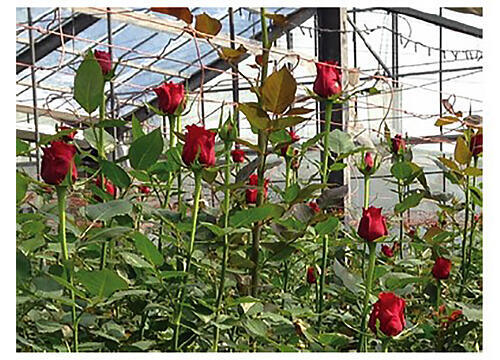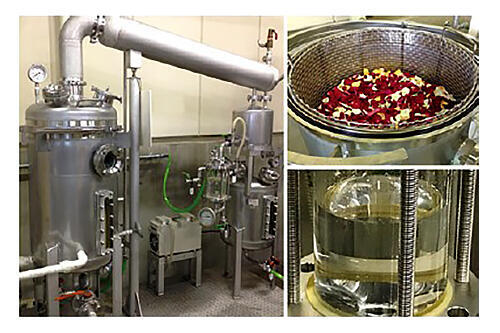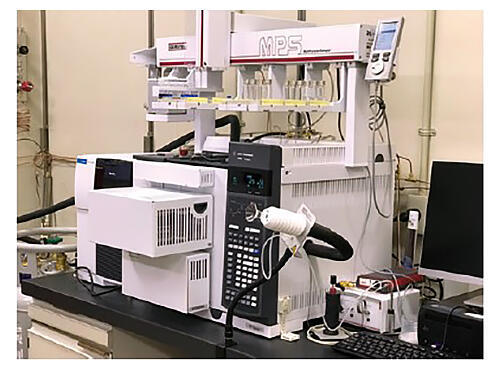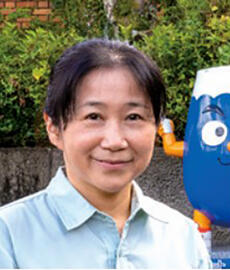Supporting manufacturing to develop local small and medium sized enterprises
Shizuoka Prefecture is blessed with rich natural features, including "mountain riches," such as the Japanese Southern Alps, Mt. Fuji, and the western foot of Hakone, and "marine riches," such as the 500km coastline extending from the Izu Peninsula to the Enshu-nada Sea, Lake Hamana, and Suruga Bay with the Kuroshio Current and deep sea, as well as cool and clear water resources and a mild climate. In addition, since ancient times, the Tokaido area has been a favorable location as a transportation corridor linking major metropolitan areas. These elements became "local power," that formed Shizuoka Prefecture into a "Department Store of Industry" with more than 3,000 food and beverage makers, including agriculture, forestry, livestock, and fishery industries; local industries in brewing, woodcraft, textiles, and papermaking; machinery and automotive industries; and even food industries. As such, research institutes for supporting the primary industries of agriculture, forestry, livestock, and fisheries, as well as for supporting manufacturing industries (which is the type of institute we belong to), have been designated across the prefecture as prefectural public testing/research organizations aiming to support industries in the prefecture.
In particular, we think that the technical assistance provided by the Industrial Research Institute of Shizuoka Prefecture (the research institute and its three support centers) is broader than in other prefectures. First, the machinery and electronics sectors can be found in all four locations as core technologies to support the machinery and equipment industries in each region. In addition, in eastern Shizuoka Prefecture, the Numazu Industrial Technology Center has a biotechnology section (brewing, fermentation, medical biotechnology), and the Fuji Industrial Technology Center has a papermaking section and a CNF (cellulose nanofiber) section. In western Shizuoka, the Hamamatsu Industrial Technology Center has a materials section (mainly machinery component materials), a fiber polymer materials section (carbon fibers and other textile fabrics), and a photonics section (laser processing).
The main research institute in central Shizuoka (Shizuoka City) has a metal materials section (metals and ceramic materials, composite plating processing), a chemical materials section (plastic and other polymer materials), a lighting and acoustics section (lighting simulation technology for automobiles, etc., acoustics evaluation, and noise control technology), an industrial arts section (furniture, building materials, natural carbon materials), a universal design section (product assessment, UD product and design development), an environmental and energy section (energy recovery from organic waste such as environmental materials and methane fermentation), and a food section (assessment of physical properties, components, and functions of foods and cosmetic materials, food processing and cosmetic formulation technology). In FY2019, an exhibition-type IoT laboratory was also established.
In recent years, a need to support one-stop manufacturing and six-sector industrialization has emerged, and there is no barrier between the primary, secondary, and tertiary industries. The range of support is not limited to the provision or spread of core technologies possessed by each research division as there are many cases in which support involves the drafting of new business development, such as entrepreneurship and business innovation. For this reason, researchers are broadening their knowledge of and expertise in technologies and are actively using wide-area collaboration with public research institutes in the Tokyo metropolitan area, such as the Tokyo Metropolitan Industrial Technology Research Institute (MTEP), and collaboration with various support organizations in the prefecture, such as industry, academia, government, and finance organizations.
This article introduces the Shizuoka Rose Promotion Project, which has been developed through cooperation between local industry, academia, and the government, starting with product development support that our research group has been involved in, as an example of a public research outcome in Shizuoka Prefecture.
Shizuoka Rose Promotion Project
The research group has worked together with small and medium-sized enterprises in the prefecture on the development and research of living products that utilize the functions of local biomass. At first, the research group investigated "molecular sieve" charcoal baked from thinned wood from Japanese cedar and cypress trees from the prefecture and were involved in the development of products for removing harmful odor components that cause bad smells and sick building syndrome, while still keeping fragrant components of trees and other plants in the indoor space. Subsequently, centering on the abundant agricultural and forestry products of Shizuoka Prefecture, the research group focused on the functionality and marketability of the "aroma" of plants; since then, research on aroma extraction from trees (timber, branches, and leaves) and citrus fruits (fruit skin and flowers), component analysis, and refining techniques have been conducted as part of the effort to make fragrance a resource.

1. Inauguration of the Shizuoka Rose Promotion Project
Seven years ago, in 2014, our research group received an inquiry from Koyo Kasei Co., Ltd. (Shizuoka City) about the development of cosmetics for local brands utilizing Shizuoka scents, especially the scent of roses. This led to the subsequent inauguration of the Shizuoka Rose Promotion Project.
As for the agricultural products of Shizuoka Prefecture, green tea, mandarins, wasabi, and greenhouse melons are famous, but the production level of flowers is also high. Shizuoka Prefecture is one of the top producers of roses in Japan (second largest in the country at approximately 10% share or 20 million shipments; 2019 agricultural statistics). Looking at the marketability of roses, in addition to the demand for ornamental cut flowers, which require beautiful "colors and shapes," the consumption-orientation for "rose fragrance" can be seen in the number of fragrances, cosmetics, and other products based on roses in recent years.
Roses in Shizuoka City have been certified as a local industrial resource, with many cut flowers being produced, but in recent years, the number of farmers and the production volumes have continued to decline.
Hence, in 2014, with the goal of "revitalizing the rose industry in Shizuoka City," and with research grants from Shizuoka City's Industry-Academia Exchange Centre (B-nest), the company set out to first, tackle high-quality rose cultivation throughout the year and second, establish fragrance material extraction techniques and develop rose-scented cosmetics using rose petals from cut branches that were discarded for being bent or otherwise non-standard. This led to the start of the "Shizuoka Rose Promotion Project," in which, local rose farmers, agriculture-related enterprises, the faculty of agriculture of Shizuoka University, industry coordinators, and the Industrial Research Institute work together, centering on Koyo Kasei. In this study, we succeeded in collecting natural extracts from roses containing high levels of "DMT" (3, 5-Dimethoxytoluene), one of the key fragrance components of roses called tea rose element, from the petals of cultivated roses, which became the driving force of their subsequent activities.
2. Rose-scented cosmetics from Shizuoka Prefecture
In response to this achievement, the Shizuoka Rose Promotion Association was launched in 2015. The main activities of the Rose Promotion Association have been the diffusion of high-quality roses produced in Shizuoka City and the development of "rose fragrance products" using extracts from rose petals and the expansion of development, sales, and PR projects.
In order to popularize high-quality rose production, the company has expanded their collaboration with rose farmers from the JA Shimizu rose subcommittee who are producers of roses. In the development of rose-scented products, Koyo Kasei introduced a vacuum water distillery to its plant adjacent to the production area to produce rosewater by extracting fresh fragrant ingredients from rose petals. This was for the commercialization of products using natural rose extracts and a production system was established for raw material procurement → extraction → cosmetics production.

The company also improved the income of rose farmers by utilizing non-standard rose petals that had been discarded (approximately 20%) as cosmetic flavor materials. Furthermore, in order to contribute to the strengthening of the brand power of the local rose industry with the aim of spreading rose aromatic cosmetics outside the region along with fresh flowers, the company received project approval (for five years starting in FY2015) from the Utilization of Regional Resources Program (Ministry of Economy, Trade and Industry) and released "barai/o" aromatic cosmetics that utilize prefectural scented roses through regional collaboration.
In addition, the company is working to develop sales channels and is currently taking on the challenge of selling at the Shizuoka City Art Museum, Shizuoka Airport, and department stores; participating in exhibitions in Japan and overseas based mainly on online sales; and recently has expanded to Chinese e-commerce websites. In the first barai/o series, the company presented three fragrances--No. 3, No. 7, and No. 76--for three items: a body cream, a mist, and a gel-type beauty lotion based on natural rose extract. The key points of development are the "healing aroma" of DMT (3,5-Dimethoxytoluen) obtained from prefectural roses. and active use of CNFs (joint application by the Rose Promotion Association and Shizuoka Prefecture, patent no. 2019-11442) contributing to the feel as well as the moisturizing and fragrance retaining functions. At that time, the Industrial Research Institute conducted research on the development of natural rose extract, analyzing fragrance components including DMT, improvement of feel when used (rheology) by adding CNF to cosmetics, moisturizing (horn layer water content by human intervention test), and retaining fragrance (slow release of rose fragrance components); these contributed to the development of rose fragrance cosmetics.

3. Building and commercializing evidence that pursues the functionality of rose scents
Looking at the recent market conditions for cosmetics, the domestic cosmetics market is growing rapidly, and the export value of domestic cosmetics is rapidly increasing, mainly in the Asian region. Despite declining domestic production of cosmetics, particularly makeup, and the global outbreak of the COVID-19 pandemic that began in the winter of 2019, output continues to show firm growth (up 15% in 2020 from the previous year; Ministry of Finance trade statistics). This may be because of the trust in safety as well as high expectations from domestic and international markets for the quality and functionality of Japanese-made cosmetics, especially skin-care products, due to the heightened health awareness about beauty products and consumer needs. From this background the challenge of exploring the functionality of the "barai/o" rose fragrance arose.

Between 2017 and 2018, the "Construction of Scientific Evidence for the Functional Utilization of Rose Scent Components by a New Evaluation Method Focusing on Biorhythm" was conducted in cooperation with Shizuoka Prefectural University in the Local Industry-Academia Value Program supported by a Japan Science and Technology Agency (JST) research grant. As a result, we found rose fragrance to have a tendency to relieve stress, especially in women with disorganized biorhythms.
In 2019-2020, with the aim of demonstrating and commercializing the evidence of rose fragrance's function, a project promotion subsidy in Shizuoka Prefecture (Shizuoka Prefectural Industrial Development Foundation), titled "Functional aroma in response to medical welfare needs utilizing nano-cellulose and the development of basic cosmetics," was carried out to demonstrate the stress mitigation effect of the aromatic components of roses produced in the prefecture, which have been successfully commercialized and turned into resources; these contributed to the construction of evidence and commercialization research to expand the business to the medical field and nursing care sites. This resulted in the discovery of more evidence of the fragrance's function, in addition to its calming effect, including a new direct function of the fragrance component on the skin that was found through cell tests. Subsequently, an emulsion formula with added CNF was developed to enable this functional fragrance component to act effectively on the skin, that is, to stably disperse and be retained in cosmetics as well as control and promote penetration into the skin (patent application 2021-29000). This winter, we plan to commercialize a new, more functional moisturizer.
Finally, the Shizuoka Rose Promotion Project, through cooperation between local industry, academia, government, and rose farmers, has produced results in developing domestic natural rose extracts and rose-scented cosmetics using petals discarded during the production of roses, a local resource, as well as in building functional evidence of the benefits of rose scents. The following have been important factors: the promotion of bold commercialization among local enterprises, research on university innovation and functionality, Industrial Research Institute technical support for the development of emulsification prescriptions through fragrance extraction and analytical technology and CNF addition, and the many years of contributions by industry coordinators who have been the main drivers of the Shizuoka Rose Promotion Association. We would like to express our appreciation for the efforts of all concerned. In the future, we will continue to utilize such industry-academia-government collaboration efforts to support enterprises and revitalize local industries.

Rie Yamashita,
Food Section, Industrial Research Institute of Shizuoka Prefecture

Kana Ishibashi,
Food Section, Industrial Research Institute of Shizuoka Prefecture




